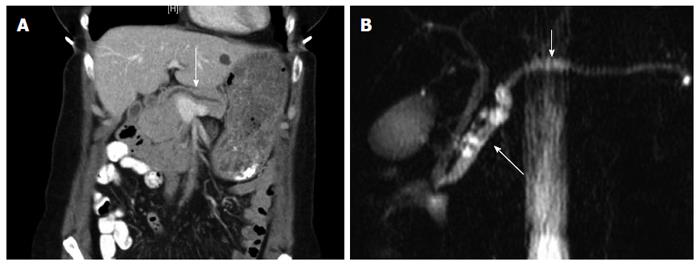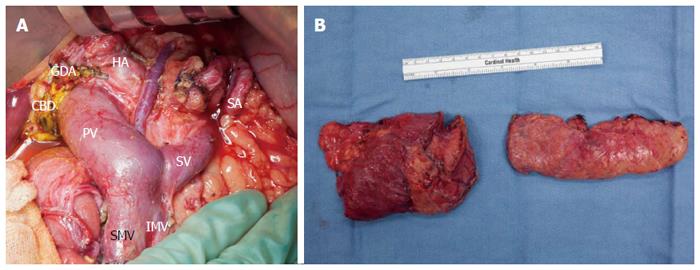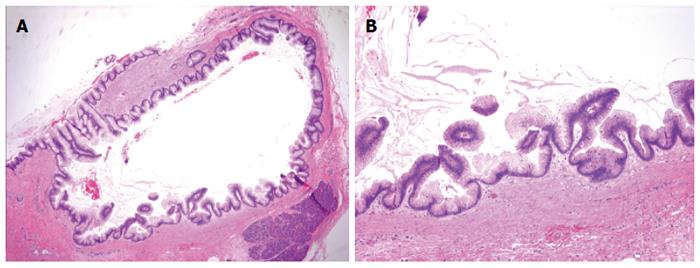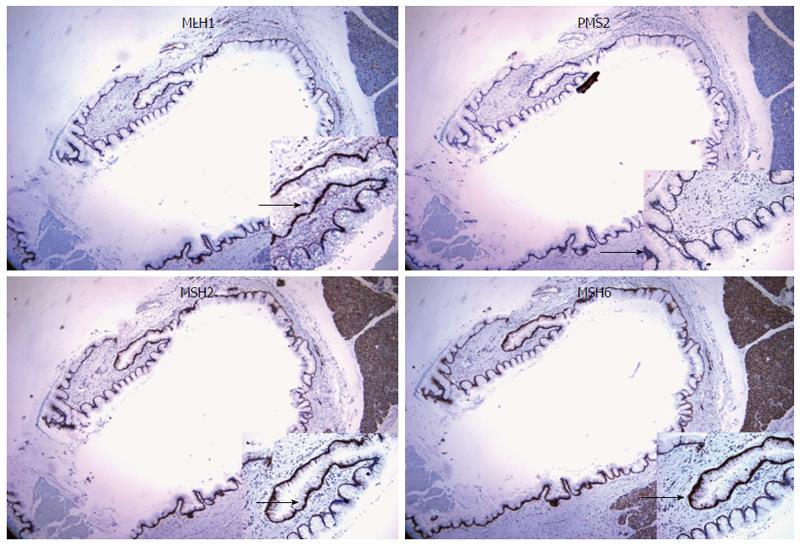Copyright
©The Author(s) 2015.
World J Gastroenterol. Mar 7, 2015; 21(9): 2820-2825
Published online Mar 7, 2015. doi: 10.3748/wjg.v21.i9.2820
Published online Mar 7, 2015. doi: 10.3748/wjg.v21.i9.2820
Figure 1 Pancreatic imaging.
A: Computed tomography imaging demonstrated progressive dilation of main pancreatic duct as compared to the prior year (white arrow). B: Magnetic resonance cholangiopancreatography shows pancreatic ductal dilation with a normal biliary tree (short white arrow). There is evidence of side-branch dilation within the head and uncinate process (long white arrow).
Figure 2 Surgical anatomy.
A: Anatomy after pancreatectomy; B: Grossly normal total pancreatectomy specimen.
Figure 3 Pancreatic duct histology.
A: IPMN involving the main pancreatic duct (40 × magnification); B: Neoplastic cells show hyperchromatic nuclei with abundant intracytoplasmic mucin. No high-grade dysplastic cells are present (100 × magnification).
Figure 4 Immunohistochemical staining.
Staining for MLH1, PMS2, MSH2, and MSH6 did not reveal loss of mismatch repair protein expression, as the neoplastic cells show uniform nuclear stain (black arrows) for all four markers (40 × magnification).
- Citation: Flanagan MR, Jayaraj A, Xiong W, Yeh MM, Raskind WH, Pillarisetty VG. Pancreatic intraductal papillary mucinous neoplasm in a patient with Lynch syndrome. World J Gastroenterol 2015; 21(9): 2820-2825
- URL: https://www.wjgnet.com/1007-9327/full/v21/i9/2820.htm
- DOI: https://dx.doi.org/10.3748/wjg.v21.i9.2820












